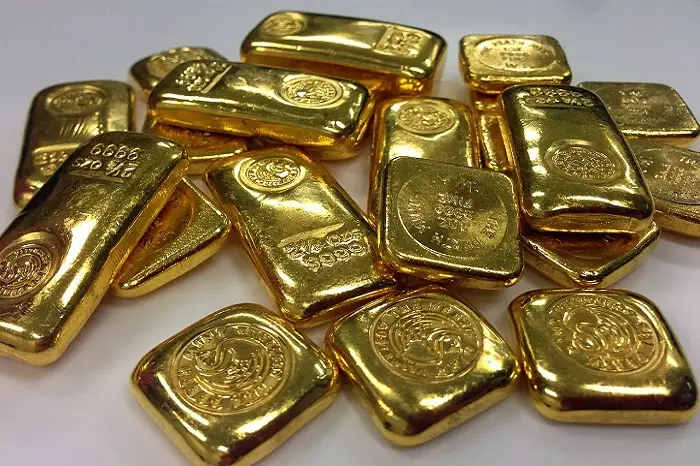Gold and silver have been used as currency, jewelry, and investment assets for centuries. Their intrinsic value stems from their rarity, aesthetic appeal, and physical properties. Gold, known for its rich yellow color, and silver, characterized by its bright luster, are commonly fashioned into rings and other jewelry items. However, one common misconception is whether these metals are magnetic.
This article seeks to clarify the magnetic properties of gold and silver and their implications for jewelry consumers. By examining the scientific foundations of magnetism, exploring the conditions under which metals can exhibit magnetic properties, and analyzing practical cases involving gold and silver rings, we aim to provide a comprehensive understanding of this topic.
Understanding Magnetism
To grasp why silver and gold rings are not attracted to magnets, we first need to understand the principles of magnetism. Magnetism is a physical phenomenon that arises from the motion of electric charges, resulting in attractive or repulsive forces between materials. The two main types of magnetism relevant to our discussion are ferromagnetism and diamagnetism.
Ferromagnetism: This is the most common form of magnetism observed in metals such as iron, cobalt, and nickel. Ferromagnetic materials can be magnetized and will be attracted to a magnet. They have unpaired electrons in their atomic structure that align in the presence of a magnetic field, creating a net magnetic moment.
Diamagnetism: In contrast, diamagnetic materials do not possess any unpaired electrons and, as a result, are not attracted to magnets. Instead, they exhibit a weak repulsion when exposed to a magnetic field. This is the case for most metals, including gold and silver.
The Magnetic Properties of Gold and Silver
Both gold and silver are classified as diamagnetic metals. This means that they do not exhibit any magnetic properties that would cause them to be attracted to magnets. Here are some key points regarding their magnetic properties:
Gold: Gold is a noble metal with a face-centered cubic (FCC) crystal structure. It has a complete electron shell, resulting in no unpaired electrons. Consequently, gold does not respond to magnetic fields and is not attracted to magnets.
Silver: Similar to gold, silver also has an FCC structure and lacks unpaired electrons. Its diamagnetic nature means that it will not be attracted to magnets.
Given these properties, consumers can confidently assess whether their gold or silver rings are genuine without worrying about magnetic attraction.
Case Studies and Examples
To further illustrate the interaction (or lack thereof) between magnets and gold/silver rings, we can examine several cases, each highlighting different aspects of this topic.
Testing Authenticity with Magnets
Many consumers wonder if they can use magnets to verify the authenticity of their gold and silver jewelry. For instance, when evaluating a gold ring, if a magnet strongly attracts it, this is a red flag indicating that the ring may contain a ferromagnetic material, potentially rendering it less valuable.
Example: A consumer purchases a ring advertised as solid gold. Upon testing with a magnet, they notice a strong attraction. This raises concerns, leading to further testing and analysis to confirm the ring’s composition.
Silver Coins and Magnetic Tests
Some investors use magnets to check the authenticity of silver coins. Since silver is also non-magnetic, the absence of attraction can serve as a quick verification method.
Example: A collector possesses a set of vintage silver coins. When tested with a magnet, they confirm the absence of attraction, verifying that the coins are likely made of genuine silver.
Magnetic Jewelry Trends
The rise of magnetic jewelry has led to confusion among consumers regarding the properties of traditional gold and silver jewelry. Some jewelry is designed to incorporate magnets for therapeutic benefits, such as improving circulation or alleviating pain.
Example: A wellness enthusiast purchases a magnetic bracelet that features gold-plated components. While the magnetic elements serve a specific purpose, the gold plating itself remains non-magnetic.
Industrial Applications of Silver and Gold
Both metals are widely used in electronics and other industries, where their non-magnetic properties are advantageous. For instance, in electronics, gold is often used for connectors and circuits, where magnetic interference could cause issues.
Example: An engineer designing a circuit board opts for gold-plated contacts due to gold’s non-magnetic and conductive properties, ensuring optimal performance.
Counterfeit Jewelry Detection
Counterfeit jewelry often incorporates lower-quality metals to mimic the appearance of gold or silver. Many of these inferior metals may exhibit ferromagnetic properties.
Example: A jeweler encounters a suspected counterfeit gold ring. By testing it with a magnet, they observe attraction, confirming the ring is not genuine gold.
Jewelry Repair and Modification
Jewelry repair often involves adding or replacing components. Understanding the magnetic properties of metals is crucial for artisans working with gold and silver.
Example: A jeweler replaces a clasp on a gold necklace. Knowing that gold is non-magnetic, they choose appropriate tools that will not interfere with the jewelry’s integrity.
Historical Context and Cultural Significance
Throughout history, cultures have valued gold and silver for their beauty and rarity. The understanding of these metals’ properties has evolved over time, influencing their uses in jewelry and currency.
Example: Ancient civilizations used gold and silver for coinage and adornment, not knowing their magnetic properties. Today, this knowledge aids in discerning authenticity and value.
Conclusion
In summary, both gold and silver rings are not attracted to magnets due to their diamagnetic properties. Understanding the differences between ferromagnetic and diamagnetic materials allows consumers to make informed decisions regarding their jewelry purchases. Testing jewelry with magnets can serve as a helpful tool in verifying authenticity, detecting counterfeits, and ensuring that the items meet quality standards. As these metals continue to play significant roles in various industries and cultures, a deeper understanding of their characteristics will benefit both consumers and professionals alike.
Related topics:
- How Do Beginners Buy Gold? A Beginner’s Guide
- How Big is a One Gram Gold Bar? Exploring Size And Value
- How Many Grams is a 22 Carat Gold Chain? Weight and Value


